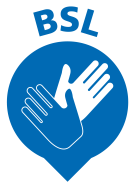Working with our expert partners, we respond to emergencies in the most effective way possible.
More than 500 paramedics respond to emergency calls across the North East every day, providing emergency pre-hospital care to the most seriously ill or injured patients.
But crucial to our success as an ambulance service, is the incredible support we receive from our specialist partners.
Air Ambulances
Where speed is essential because of the severity of a patient’s illness or injury, or if the patient can’t be reached easily by road, we work with the Great North Air Ambulance Service (GNAAS) to get life-saving pre-hospital care to the scene as quickly as possible.
GNAAS is a charity funded by donations, and their service is instrumental in rescuing hundreds of severely ill or injured patients across the North East every year.
Immediate Care Responders
North East Immediate Care is a local charity and the British Association for Immediate Care (BASICS) affiliated scheme covering the North East Ambulance Service NHS Foundation Trust area.
Immediate Care (BASICS) responders are volunteer Doctors and Paramedics, with additional training, who respond to emergency calls and provide extra support to ambulance crews at the request of NEAS.
Information about the team can be found at www.NEimmediatecare.org
Community first responders
Community First Responders (CFRs) are a team of volunteers who are trained and dispatched by us to help with emergencies in their community before the ambulance arrives. Their role is to help stabilise the patient within those crucial first few minutes of an emergency and provide appropriate care before the paramedics get there.
They deal with a specific list of medical emergencies, including cardiac arrest, and they are a crucial part of the Chain of Survival in the North East.
Hazardous Area Response Team (HART)
HART units are made up of specially trained paramedics who are equipped to provide the ambulance response to high-risk environments and complex emergency situations. They work alongside police and fire and rescue services inside what is known as the ‘inner cordon’ or ‘hot zone’ of a major incident.
If a chemical site exploded or a terrorist attack took place in the North East, HART would be the section of NEAS in charge of the operation. Their job would be to triage and treat casualties, while also looking after other emergency personnel who may become injured.
